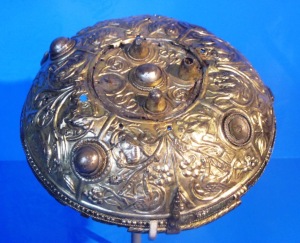Just a quick post today, mostly because I’m a bit freaked out by the slew of material on the ‘net yesterday and today claiming that this-that-or-the-other group is x% Viking, or that Penrith is 5% Viking (if you’re a man), or Yorkshire something more. The fact is that if you ask a scientific expert – for which I recommend Sense About Science for a quickie – they say that it’s not that straightforward. The DNA testing companies that offer you and me the chance to decide we’re Celtic or Viking or Egyptian or whatever are being massively simplistic. We’re all probably related to the Vikings somewhere along the line, never mind the million that the headlines were talking yesterday.
Having depressed you all nicely, I remind you of these rather wonderful, actual Viking things that were found in a field, traditionally known as Silver Field (hah!), near Newbiggin, Penrith. One brooch was Continue reading





